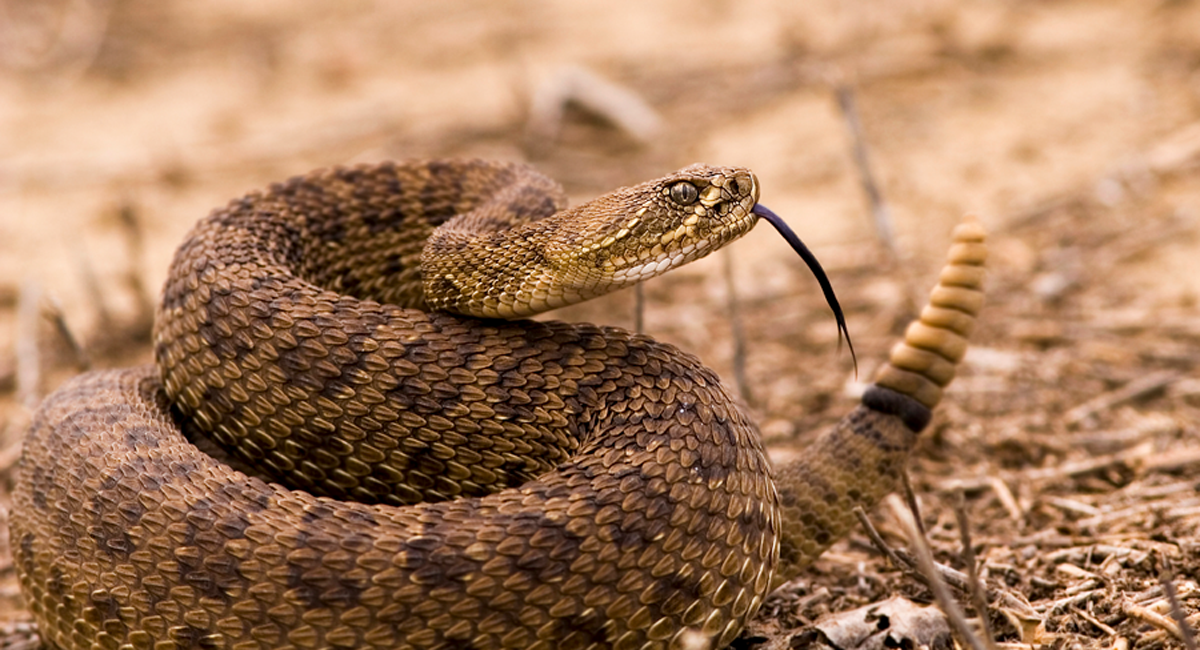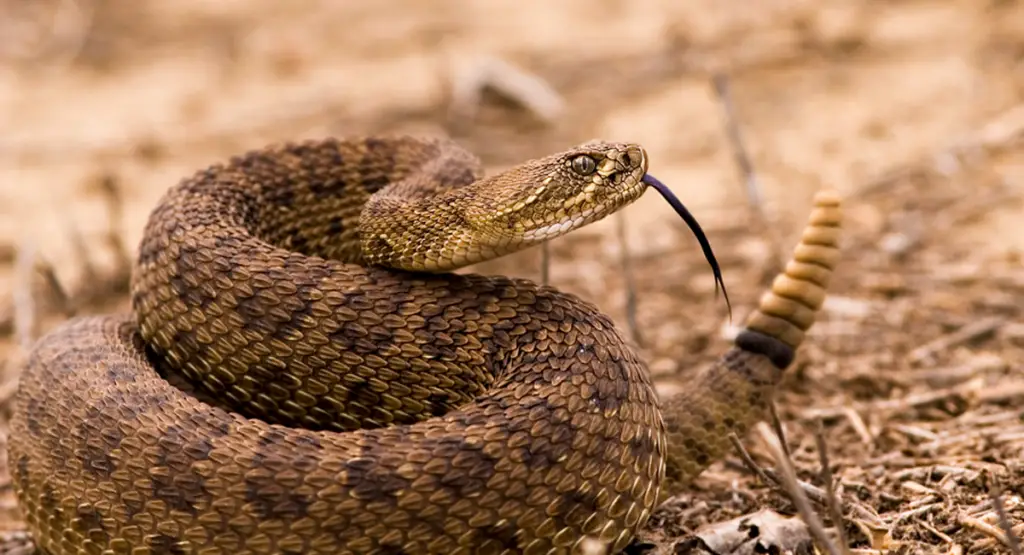Rattlesnake bites can be a scary and potentially life-threatening experience. Whether you are out hiking in the wilderness or simply gardening in your backyard, it’s important to know what to do if you find yourself bitten by a rattlesnake. In this article, we will explore the steps you should take if you are ever in this situation, including what you should do immediately after the bite and how to seek medical attention.
If a rattlesnake bites you, it’s important to seek medical attention immediately. While waiting for help, try to stay calm and still to slow the spread of venom. Remove any tight clothing or jewelry near the bite site and keep the affected area at or below heart level. Do not try to suck out the venom or use a tourniquet. These methods can actually make things worse.

What to Do if Rattlesnake Bites You?
Rattlesnakes are venomous snakes found in many parts of the world. They have a distinctive rattle on their tail that can be heard when they feel threatened. Rattlesnake bites can be life-threatening if not treated promptly. Here are some steps you can take if you are ever bitten by a rattlesnake.
Stay Calm and Seek Medical Help
The first thing to do if you are bitten by a rattlesnake is to stay calm and seek medical help immediately. Call 911 or your local emergency services as soon as possible. While waiting for help to arrive, keep the bitten area still and below the level of your heart. This will help slow down the spread of venom in your body.
If you are in a remote area, try to get to a hospital or medical facility as soon as possible. Do not try to drive yourself to the hospital, as the venom can cause dizziness and confusion.
Remove Tight Clothing and Jewelry
If the bite is on an arm or leg, remove any tight clothing or jewelry from the affected limb. This will help prevent swelling and allow you to move the limb more easily. Do not cut or suck the wound, as this can cause more harm than good.
Apply a Compression Bandage
Apply a compression bandage to the affected limb, starting at the bite site and wrapping towards the heart. The bandage should be tight, but not so tight that it cuts off circulation. This will help slow down the spread of venom in your body.
Keep the Bite Site Clean and Elevated
Once you have applied the compression bandage, keep the bite site clean and elevated. This will help reduce swelling and pain. Do not apply ice or heat to the bite, as this can make the venom spread more quickly.
Get Antivenom Treatment
The only way to treat a rattlesnake bite is with antivenom. This is a specific type of medication that neutralizes the venom in your body. Antivenom should be administered as soon as possible after the bite, ideally within two hours.
Stay in the Hospital for Observation
After receiving antivenom treatment, you will need to stay in the hospital for observation. This is to make sure that the venom has been completely neutralized and that you are not experiencing any adverse reactions to the treatment.
Take Steps to Prevent Future Bites
To prevent future rattlesnake bites, be aware of your surroundings when hiking, camping, or working outdoors. Wear long pants and boots, and avoid walking in areas where rattlesnakes are known to live. If you see a rattlesnake, give it a wide berth and do not try to approach it.
Benefits of Seeking Prompt Medical Attention
Seeking prompt medical attention after a rattlesnake bite can be life-saving. Antivenom treatment is the only effective way to neutralize the venom in your body. The sooner you receive treatment, the better your chances of a full recovery.
Rattlesnake Bite vs. Other Types of Snake Bites
Rattlesnake bites are particularly dangerous because rattlesnake venom is highly toxic. However, other types of snake bites can also be life-threatening if not treated promptly. If you are ever bitten by a snake, seek medical attention immediately.
Conclusion
Rattlesnake bites are a serious medical emergency. If you are ever bitten by a rattlesnake, stay calm and seek medical help immediately. Remember to keep the affected limb still and below the level of your heart, and apply a compression bandage to slow down the spread of venom. With prompt medical attention, most people make a full recovery from rattlesnake bites.
Frequently Asked Questions
Encountering a rattlesnake can be a frightening experience, especially if it bites you. Knowing what to do in such a situation can be lifesaving. Here are some frequently asked questions about what to do if a rattlesnake bites you.
How do I know if a rattlesnake has bitten me?
If you are bitten by a rattlesnake, you will feel a sharp and sudden pain, followed by swelling and redness at the bite site. You may also experience nausea, vomiting, and difficulty breathing. In severe cases, you may even experience paralysis or convulsions. It is important to seek medical attention immediately if you suspect that you have been bitten by a rattlesnake.
It is worth noting that not all rattlesnake bites are poisonous, and the severity of the bite will depend on various factors such as the size and age of the snake and the location of the bite on your body.
What should I do if a rattlesnake bites me?
If a rattlesnake bites you, the first thing you should do is stay calm and call for medical help immediately. While waiting for help to arrive, try to immobilize the affected limb and keep it elevated to reduce swelling. Avoid moving too much, as this could spread the venom throughout your body. Remove any tight clothing or jewelry from the affected area to prevent further swelling.
Do not attempt to suck the venom out of the wound or cut the bite site. These actions can cause more harm than good and are not recommended.
What should I not do if a rattlesnake bites me?
There are several things you should avoid doing if you are bitten by a rattlesnake. Do not attempt to catch or kill the snake, as this could put you or others in danger. Do not apply ice or a tourniquet to the affected area, as this can worsen the damage caused by the venom. Do not consume alcohol or caffeine, as this can increase your heart rate and cause the venom to spread more quickly throughout your body.
It is important to seek medical attention as soon as possible in the event of a rattlesnake bite, and to follow the instructions of medical professionals carefully.
How can I prevent rattlesnake bites?
There are several steps you can take to reduce your risk of being bitten by a rattlesnake. Avoid walking in tall grass or rocky areas where snakes may be hiding. Wear protective clothing such as boots and long pants when hiking or working in areas where snakes may be present. Be aware of your surroundings and keep an eye out for snakes, especially during the warmer months when they are most active. Do not attempt to handle or capture snakes, and avoid disturbing their habitats whenever possible.
It is also a good idea to educate yourself about the types of snakes that are native to your area, and to learn how to identify them in the wild.
What is the treatment for a rattlesnake bite?
The treatment for a rattlesnake bite will depend on the severity of the bite and the type of venom that was injected. In most cases, treatment will involve the administration of antivenom medication to neutralize the effects of the venom. Pain medication and antibiotics may also be prescribed to manage symptoms and prevent infection.
In severe cases, hospitalization may be necessary, and additional treatments such as oxygen therapy or mechanical ventilation may be required to support breathing and circulation.
When Snakes Bite: Pre-Hospital Care
In conclusion, encountering a rattlesnake can be a frightening experience, but it is important to remain calm and take the necessary precautions. If you are bitten by a rattlesnake, you should seek medical attention immediately. It is also important to stay still and limit your movement to prevent the venom from spreading quickly throughout your body.
Remember, prevention is key when it comes to avoiding rattlesnake bites. Always wear appropriate footwear and clothing when hiking or spending time outdoors in areas where rattlesnakes are common. Be aware of your surroundings and keep a safe distance from any snakes you may encounter.
By following these tips and remaining cautious, you can enjoy the great outdoors without the fear of encountering a rattlesnake. Stay safe and happy exploring!


